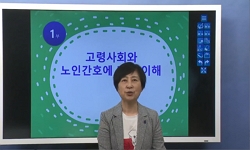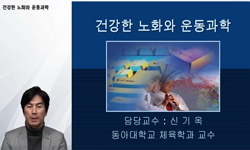Cellular senescence is a biologically irreversible state of cell-growth arrest that occurs following either a replicative or an oncogenic stimulus. This phenomenon occurs as a response to the presence of premalignant cells and appears to be an importa...
http://chineseinput.net/에서 pinyin(병음)방식으로 중국어를 변환할 수 있습니다.
변환된 중국어를 복사하여 사용하시면 됩니다.
- 中文 을 입력하시려면 zhongwen을 입력하시고 space를누르시면됩니다.
- 北京 을 입력하시려면 beijing을 입력하시고 space를 누르시면 됩니다.



REVIEW : The Role of Cellular Senescence in the Gastrointestinal Mucosa = REVIEW : The Role of Cellular Senescence in the Gastrointestinal Mucosa
한글로보기https://www.riss.kr/link?id=A99703881
-
저자
( Joshua D Penfield ) (Division of Gastroenterology and Hepatology, Mayo) ; ( Marlys Anderson ) (Division of Gastroenterology and Hepatology, Mayo) ; ( Lori Lutzke ) (Division of Gastroenterology and Hepatology, Mayo) ; ( Kenneth K Wang ) (Division of Gastroenterology and Hepatology, Mayo Clinic)
- 발행기관
- 학술지명
- 권호사항
-
발행연도
2013
-
작성언어
Korean
- 주제어
-
KDC
511.43
-
등재정보
KCI등재후보,SCIE,SCOPUS
-
자료형태
학술저널
-
수록면
270-277(8쪽)
-
KCI 피인용횟수
8
- 제공처
-
0
상세조회 -
0
다운로드
부가정보
다국어 초록 (Multilingual Abstract)
Cellular senescence is a biologically irreversible state of cell-growth arrest that occurs following either a replicative or an oncogenic stimulus. This phenomenon occurs as a response to the presence of premalignant cells and appears to be an important anticancer mechanism that keeps these transformed cells at bay. Many exogenous and endogenous triggers for senescence have been recognized to act via genomic or epigenomic pathways. The most common stimulus for senescence is progressive loss of telomeric DNA, which results in the loss of chromosomal stability and eventual unregulated growth and malignancy. Senescence is activated through an interaction between the p16 and p53 tumor suppressor genes. Senescent cells can be identified in vitro because they express senescence-associated β-galactosidase, a marker of increased lysosomal activity. Cellular senescence plays an integral role in the prevention and development of both benign and malignant gastrointestinal diseases. The senescence cascade and the cell-cycle checkpoints that dictate the progression and maintenance of senescence are important in all types of gastrointestinal cancers, including pancreatic, liver, gastric, colon, and esophageal cancers. Understanding the pathogenic mechanisms involved in cellular senescence is important for the development of agents targeted toward the treatment of gastrointestinal tumors. (Gut Liver 2013; 7:270-277)
참고문헌 (Reference)
1 Going JJ, "‘Senescence-associated’ beta-galactosidase activity in the upper gastrointestinal tract" 196 : 394-400, 2002
2 de Keizer PL, "p53: pro-aging or pro-longevity?" 2 : 377-379, 2010
3 Freund A, "p38MAPK is a novel DNA damage response-independent regulator of the senescence-associated secretory phenotype" 30 : 1536-1548, 2011
4 Bazarov AV, "p16(INK4a)-mediated suppression of telomerase in normal and malignant human breast cells" 9 : 736-746, 2010
5 Mah LJ, "gammaH2AX: a sensitive molecular marker of DNA damage and repair" 24 : 679-686, 2010
6 Rabien A, "Tumor suppressor p16INK4a controls oncogenic K-Ras function in human pancreatic cancer cells" 103 : 169-175, 2012
7 Coppe JP, "Tumor suppressor and aging biomarker p16(INK4a) induces cellular senescence without the associated inflammatory secretory phenotype" 286 : 36396-36403, 2011
8 Waaijer ME, "The number of p16INK4a positive cells in human skin reflects biological age" 11 : 722-725, 2012
9 Hayflick L, "The limited in vitro lifetime of human diploid cell strains" 37 : 614-636, 1965
10 Cheung AL, "Telomere dysfunction, genome instability and cancer" 13 : 2075-2090, 2008
1 Going JJ, "‘Senescence-associated’ beta-galactosidase activity in the upper gastrointestinal tract" 196 : 394-400, 2002
2 de Keizer PL, "p53: pro-aging or pro-longevity?" 2 : 377-379, 2010
3 Freund A, "p38MAPK is a novel DNA damage response-independent regulator of the senescence-associated secretory phenotype" 30 : 1536-1548, 2011
4 Bazarov AV, "p16(INK4a)-mediated suppression of telomerase in normal and malignant human breast cells" 9 : 736-746, 2010
5 Mah LJ, "gammaH2AX: a sensitive molecular marker of DNA damage and repair" 24 : 679-686, 2010
6 Rabien A, "Tumor suppressor p16INK4a controls oncogenic K-Ras function in human pancreatic cancer cells" 103 : 169-175, 2012
7 Coppe JP, "Tumor suppressor and aging biomarker p16(INK4a) induces cellular senescence without the associated inflammatory secretory phenotype" 286 : 36396-36403, 2011
8 Waaijer ME, "The number of p16INK4a positive cells in human skin reflects biological age" 11 : 722-725, 2012
9 Hayflick L, "The limited in vitro lifetime of human diploid cell strains" 37 : 614-636, 1965
10 Cheung AL, "Telomere dysfunction, genome instability and cancer" 13 : 2075-2090, 2008
11 Feldser DM, "Telomere dysfunction and the initiation of genome instability" 3 : 623-627, 2003
12 Frias C, "Telomere dysfunction and genome instability" 17 : 2181-2196, 2012
13 Davalos AR, "Senescent cells as a source of inflammatory factors for tumor progression" 29 : 273-283, 2010
14 Krizhanovsky V, "Senescence of activated stellate cells limits liver fibrosis" 134 : 657-667, 2008
15 Fitzner B, "Senescence determines the fate of activated rat pancreatic stellate cells" 16 : 2620-2630, 2012
16 Xue W, "Senescence and tumour clearance is triggered by p53 restoration in murine liver carcinomas" 445 : 656-660, 2007
17 Yao H, "Role of histone deacetylase 2 in epigenetics and cellular senescence: implications in lung inflammaging and COPD" 303 : L557-L566, 2012
18 Froeling FE, "Retinoic acid-induced pancreatic stellate cell quiescence reduces paracrine Wnt-beta-catenin signaling to slow tumor progression" 141 : 1486-1497, 2011
19 Ventura A, "Restoration of p53 function leads to tumour regression in vivo" 445 : 661-665, 2007
20 David G, "Regulation of oncogene-induced cell cycle exit and senescence by chromatin modifiers" 13 : 992-1000, 2012
21 Debacq-Chainiaux F, "Protocols to detect senescence-associated beta-galactosidase (SA-betagal) activity, a biomarker of senescent cells in culture and in vivo" 4 : 1798-1806, 2009
22 Xu Q, "Overexpression of the DEC1 protein induces senescence in vitro and is related to better survival in esophageal squamous cell carcinoma" 7 : e41862-, 2012
23 Wajapeyee N, "Oncogenic BRAF induces senescence and apoptosis through pathways mediated by the secreted protein IGFBP7" 132 : 363-374, 2008
24 Peltomaki P, "Mutations and epimutations in the origin of cancer" 318 : 299-310, 2012
25 Macgregor-Das AM, "Molecular pathways in pancreatic carcinogenesis" 107 : 8-14, 2013
26 Quintas-Cardama A, "Molecular biology of bcr-abl1-positive chronic myeloid leukemia" 113 : 1619-1630, 2009
27 Vanuytsel T, "Major signaling pathways in intestinal stem cells" 1830 : 2410-2426, 2012
28 Watts G, "Leonard Hayflick and the limits of ageing" 377 : 2075-, 2011
29 Freund A, "Lamin B1 loss is a senescence-associated biomarker" 23 : 2066-2075, 2012
30 Chiantore MV, "Interferon-beta induces cellular senescence in cutaneous human papilloma virus-transformed human keratinocytes by affecting p53 transactivating activity" 7 : e36909-, 2012
31 Hasan MR, "Inhibition of VEGF induces cellular senescence in colorectal cancer cells" 129 : 2115-2123, 2011
32 Freund A, "Inflammatory networks during cellular senescence: causes and consequences" 16 : 238-246, 2010
33 Krizhanovsky V, "Implications of cellular senescence in tissue damage response, tumor suppression, and stem cell biology" 73 : 513-522, 2008
34 Nakano A, "Immunohistochemical studies on the expression of P-glycoprotein and p53 in relation to histological differentiation and cell proliferation in hepatocellular carcinoma" 25 : 158-165, 2003
35 Wang Y, "High expression of p16INK4a and low expression of Bmi1 are associated with endothelial cellular senescence in the human cornea" 18 : 803-815, 2012
36 Wiemann SU, "Hepatocyte telomere shortening and senescence are general markers of human liver cirrhosis" 16 : 935-942, 2002
37 Corless CL, "Gastrointestinal stromal tumours: origin and molecular oncology" 11 : 865-878, 2011
38 Kuo LJ, "Gamma-H2AX: a novel biomarker for DNA double-strand breaks" 22 : 305-309, 2008
39 Tollervey JR, "Epigenetics: judge, jury and executioner of stem cell fate" 7 : 823-840, 2012
40 Goel A, "Epigenetics of colorectal cancer" 143 : 1442-1460, 2012
41 Galvani E, "Epidermal growth factor receptor tyrosine kinase inhibitors: current status and future perspective in the development of novel irreversible inhibitors for the treatment of mutant non-small cell lung cancer" 19 : 818-832, 2013
42 Moretti F, "Effects of exogenous p53 transduction in thyroid tumor cells with different p53 status" 85 : 302-308, 2000
43 Katz SF, "Disruption of Trp53 in livers of mice induces formation of carcinomas with bilineal differentiation" 142 : 1229-1239, 2012
44 Carriere C, "Deletion of Rb accelerates pancreatic carcinogenesis by oncogenic Kras and impairs senescence in premalignant lesions" 141 : 1091-1101, 2011
45 Rodier F, "DNA-SCARS: distinct nuclear structures that sustain damage-induced senescence growth arrest and inflammatory cytokine secretion" 124 (124): 68-81, 2011
46 Nagaria P, "DNA double-strand break response in stem cells: mechanisms to maintain genomic integrity" 1830 : 2345-2353, 2013
47 Chen Z, "Crucial role of p53-dependent cellular senescence in suppression of Pten-deficient tumorigenesis" 436 : 725-730, 2005
48 Garagnani P, "Colorectal cancer microenvironment: among nutrition, gut microbiota, inflammation and epigenetics" 19 : 765-778, 2012
49 National Cancer Institute, "Colon and rectal cancer" Bethesda: National Cancer Institute at the National Institutes of Health
50 Campisi J, "Cellular senescence: when bad things happen to good cells" 8 : 729-740, 2007
51 Campisi J, "Cellular senescence: putting the paradoxes in perspective" 21 : 107-112, 2011
52 Rayess H, "Cellular senescence and tumor suppressor gene p16" 130 : 1715-1725, 2012
53 Breivik J, "Carcinogenesis and natural selection: a new perspective to the genetics and epigenetics of colorectal cancer" 76 : 187-212, 1999
54 Everhart JE, "Burden of digestive diseases in the United States. Part III: liver, biliary tract, and pancreas" 136 : 1134-1144, 2009
55 Oikonomou E, "BRAF(V600E) efficient transformation and induction of microsatellite instability versus KRAS(G12V) induction of senescence markers in human colon cancer cells" 11 : 1116-1131, 2009
56 "Association of TP53 Mutations With Stem Cell-Like Gene Expression and Survival of Patients With Hepatocellular Carcinoma" W B SAUNDERS CO-ELSEVIER INC 140 : 1063-U524, 2011
57 He L, "A microRNA component of the p53 tumour suppressor network" 447 : 1130-1134, 2007
동일학술지(권/호) 다른 논문
-
- The Editorial Office of Gut and Liver
- ( Kazunari Nakahara )
- 2013
- KCI등재후보,SCIE,SCOPUS
-
- The Editorial Office of Gut and Liver
- ( Joo Hyun Lim )
- 2013
- KCI등재후보,SCIE,SCOPUS
-
- The Editorial Office of Gut and Liver
- ( Jun Young Song )
- 2013
- KCI등재후보,SCIE,SCOPUS
-
Brief communication: Endoscopic Ultrasound-Guided Therapeutic Thoracentesis
- The Editorial Office of Gut and Liver
- ( Leticia P Luz )
- 2013
- KCI등재후보,SCIE,SCOPUS
분석정보
인용정보 인용지수 설명보기
학술지 이력
| 연월일 | 이력구분 | 이력상세 | 등재구분 |
|---|---|---|---|
| 2023 | 평가예정 | 해외DB학술지평가 신청대상 (해외등재 학술지 평가) | |
| 2020-02-25 | 학회명변경 | 한글명 : 거트앤리버 발행위원회 -> 거트앤리버 소화기연관학회협의회 |  |
| 2020-01-01 | 평가 | 등재학술지 유지 (해외등재 학술지 평가) |  |
| 2013-10-01 | 평가 | 등재학술지 선정 (기타) |  |
| 2012-01-01 | 평가 | 등재후보학술지 유지 (기타) |  |
| 2011-01-01 | 평가 | 등재후보 1차 FAIL (등재후보1차) |  |
| 2009-01-01 | 평가 | SCIE 등재 (신규평가) |  |
학술지 인용정보
| 기준연도 | WOS-KCI 통합IF(2년) | KCIF(2년) | KCIF(3년) |
|---|---|---|---|
| 2016 | 2.29 | 0.44 | 1.5 |
| KCIF(4년) | KCIF(5년) | 중심성지수(3년) | 즉시성지수 |
| 1.21 | 1.02 | 0.46 | 0.28 |




 KCI
KCI KISS
KISS






